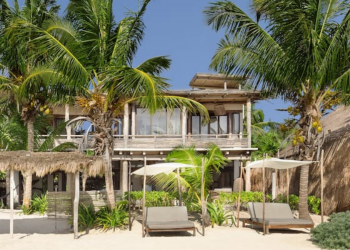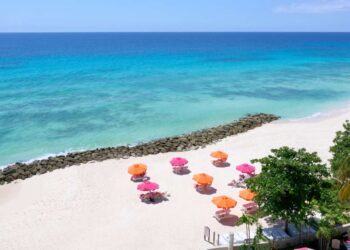“When I was five years old I had my first existential crisis,” says my hiking guide, Jorge, as we clamber along Spain’s Camino Way. “That’s when I first realized someday I would die.” He grins. “But, I am not dead, yet.”
We walk along in companionable silence. In fact, blisters notwithstanding, on the well-worn path enroute to Santiago de Compostela hewed into the northwestern part of the Iberian Peninsula, we feel very much alive. Conversations about profound things happen naturally on this pilgrim’s trek, a journey hiked by thousands before us for more than a millennium. According to scholars, this hike, which has many tributaries all leading to the storied cathedral in Santiago de Compostela, enticed not only medieval Catholics, but pre-Christian people as well, who ambled here long before the finding of St.James’ remains in the 9th century. Some historians argue the route dates back to the Romans, who may have called it the Via Janus, named after the two-faced god, Janus. With a dual visage looking both left and right, he represents the beginning and ending of all things, the past and the future, doorways, thresholds and portals — and thus, transformation. That makes sense on this trail of renewal, an odyssey often undergone nowadays by those suffering through some kind of transition time. When one reaches the end in Santiago, insights have been absorbed, regeneration achieved, and challenges overcome.
It’s a metaphor, of course — a hero’s journey once taken by despairing medieval pilgrims, hoping to walk their way into heaven. Many died along the way, though it was easier than marching to Jerusalem. Today, a variety of trails comprise the “Camino.” The French way stands out as the most common route. It extends some 500 miles through varied terrain from St. Jean Pied de Port to Pamplona, on to Burgos — and eventually all the way to Celtic Galicia — ending in soulful Santiago de Compostela, though many pilgrims continue all the way to the sea. On any trail, all ages can be seen traipsing along. They hail from around the globe. Some go by bike; some by wheelchair. I have seen at least one cart, complete with a child rider, pulled by a donkey. Some folks walk for spiritual reflection, others for an athletic challenge. Some go in groups, others wander solo.The journey, well trammeled, passes through mountains, cow paths, and lush hills; it runs alongside vineyards, orchards, estuaries, and crosses rivers. It features wild horses, cows, wolves, and the occasional bear. On the Coastal Way, in Asturias, it rims soaring sea cliffs. Via the Primitive Way, perhaps the first Camino, the path incorporates raw, unspoiled terrain, and steep ascents; it has patchy support for hikers, in terms of hostels, huts, villages, and restaurants. Foggy and mysterious on any route, often rainy, the landscape encompasses moss-covered buildings, moldering churches, tiny, timeless hamlets, and fields bursting with heather and broom. Wherever you march, the doleful countryside awakens something within — no matter why you’ve come.
I’ve never taken the five weeks required to walk the entire Camino at one time. Instead, I do as many intrepid ramblers do — I perambulate it when I can, in bits and pieces, one week, or even a few days step by step. I’ve slogged it in France, where it wends down toward Spain, called St. Jacques’ Trail. And, I’ve lumbered over it in Germany, where it is known as the Jacobweg, cutting across northern Italy. In Spain, I’ve experienced it in various sections, but never managed to walk into Santiago itself, descending to the finish line (as it were) from the aptly named Hill of Joy. A mountain top in the last stage of the walk, it overlooks the city. This sight to behold brings tears, even if you haven’t been on the road for days. You’ll spy a round of buildings, wedged in a valley, glittering like gold dust in the sun, anchored by the cathedral’s beckoning spires, a signpost as loud as a victory march.
It’s only when I join a REI Adventure trip, a small group hike replete with able guides, that I see the city from the Hill of Joy for the first time. Featuring an itinerary meant to showcase key aspects of the Camino Way, the nine-day REI walk takes us to some of the oldest and least traveled paths, and provides the sage experience of guides well entrenched in the culture. Jorge Granda, (he of the childhood existential crisis), hails from Asturia, and offers a bevy of local insight and deep thoughts about his people. Sol Eizaguirre, a Basque, has walked the path myriad times — and, like so many before her, she has hiked it for personal healing. “It gets into your soul. You feel its power,”she says, passionate about the ritual. An anthropologist, she’s in tune with the energy, and tells anecdotes and legends that help us see the Way’s abundant layers. Her narratives deeply enrich our hike. And, Jeremy Dack, a mountain guide who knows the Camino from an outdoorsman’s perspective, provides expert guidance, keeping us safe, maintaining our pace, and moving us through an itinerary that manifests REI’s perspective on this mind-boggling destination.
At this time, REI Adventures is the only tour group to offer guided hikes over this certain combination of the vast, varied terrain — including taking walkers all the way to the sea, (Cape Finisterre), considered by early humans to be the end of the world. Throughout our hike, we take breaks from the road to explore dinosaur track fossils, prehistoric cave paintings, the remains of an ancient Celtic village, an abandoned Benedictine Monastery, and intact Roman walls. We stay in small inns, each echoing some aspect of history, such as one in Llanes, (Hotel Don Paco), that was a former chapel, and another in Eidian, (Pazo Eidian), that served as a regal family’s hunting fortress. Everywhere, we join locals in their restaurants, gobbling up regional fare (lots of seafood and jamon), and tippling local beer and wine (Albarino hails from this area).
Whether one walks for a week or five, the custom of the Camino has an impact. Walkers tend to mix with strangers, moving in and out among groups of hikers, bonding in the meditative task of the rhythm. Stories get shared, hearts open. Walking alone or in an organized group equally yields physical struggle, an unraveling of your guard, and a crisis of the soul. Expect to get lost — and found. As you follow shell markers and search for painted yellow arrows pointing to Santiago, you’ll surely take a wrong turn — just as in life. Reassuringly, another pilgrim — or a local farmer — will put you back on track. It’s the way — and it represents a lesson in trust — and patience. It helps you make sense out of your world, to take a look at that mulch pile of your being, and construct something from it, something that fortifies you as you move forward on this road — and the rest of your life. “Buen Camino,” people will say, and mean it.
The night I finish my walk, I have a room at San Francisco Hotel Monumento, a one-time monastery near the cathedral in Santiago. Dusty, sweaty, tired, all I want is a hot bath, paired with a glass of chilled Albarino. But the water in the tub only flows cold. When the front desk attendant comes to my aid, he neatly hangs his jacket on a hook in the bathroom, and works fervently to fix the problem. As he tinkers, he talks to me about the Camino. “It will change you forever,” he says. “But, more so, it will safeguard you, wherever you go, whatever you do.”
At last, the hot water trickles from the faucet: “Poco by poco,” he says. “Just like the Camino.”







